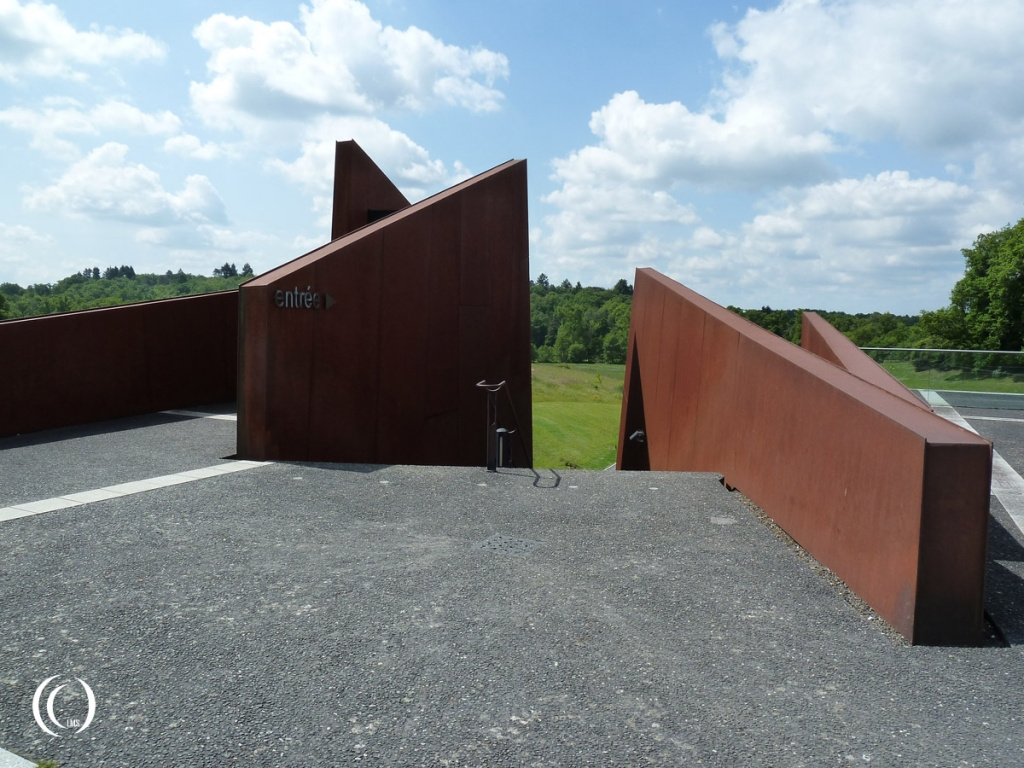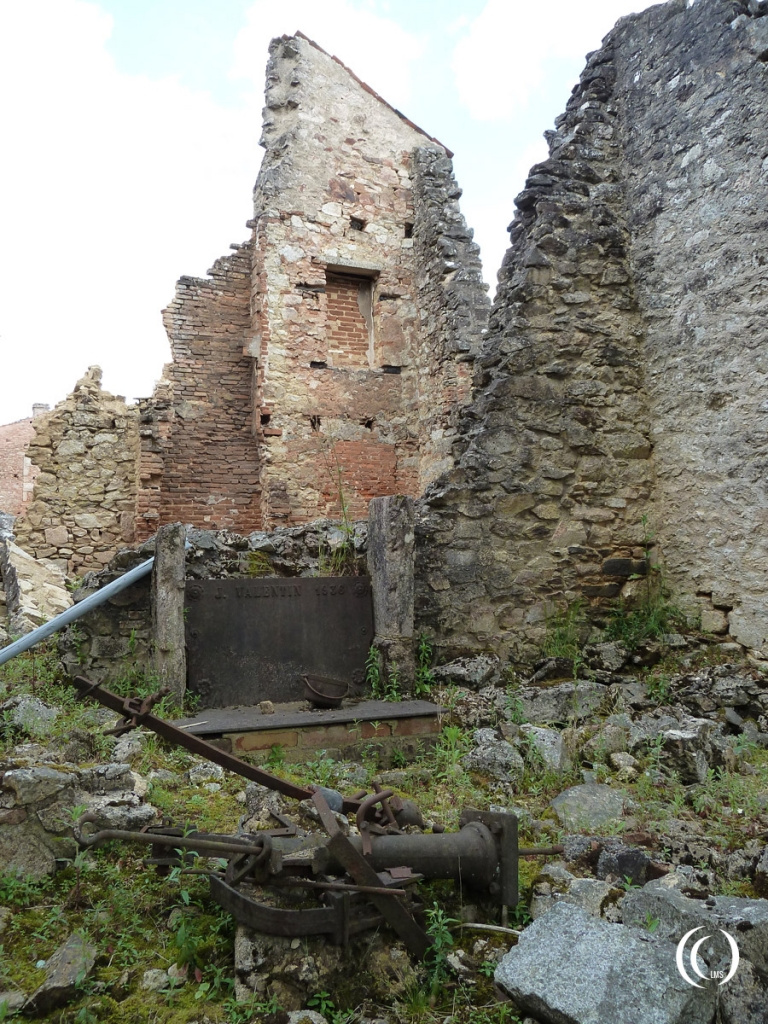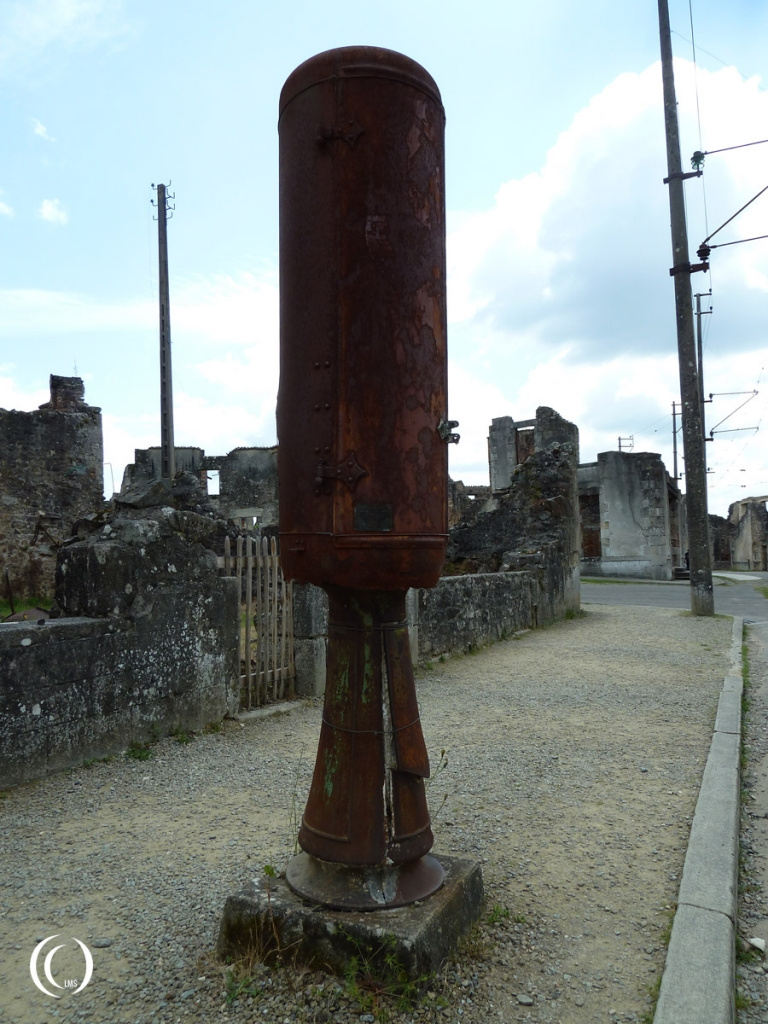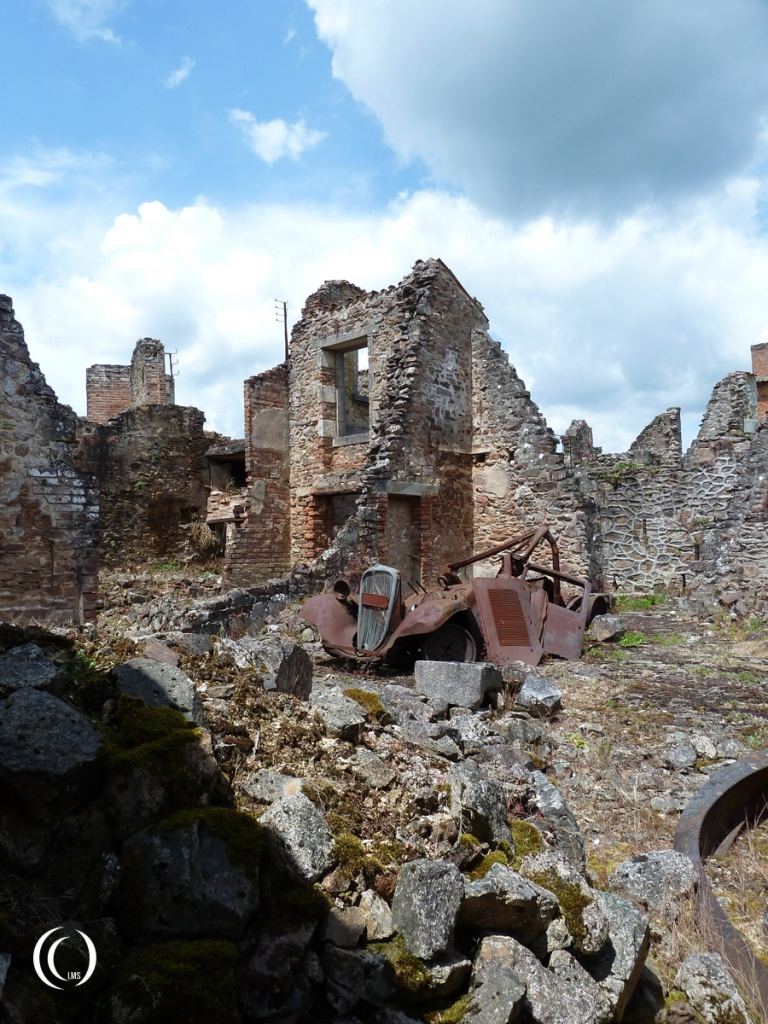
For the people of Oradour-sur-Glane (Limousin, France), life had gone on as usual. Even though the Germans had occupied their country and forced France into surrender years before, no Wehrmacht soldiers had been stationed in the village, nor did any ever pass through it, since their village lay inside the semi-autonomous region of the Vichy France regime and was considered “cooperative”. It all seemed like the Second World War would pass this village by quietly, but that all changed on that horrific Saturday afternoon of June the 10th 1944, with the arrival of a detachment of about a 150 soldiers of the 1st Battalion of “Der Führer” Regiment, part of the 2nd SS Panzer Division “Das Reich”.
There is a lot of speculation as to why Oradour-sur-Glane was chosen or what could have been the cause that triggered the massacre. D-day had come four days before on the 6th of June and the Allied forces had managed to conquer the beaches of Normandy. Operation Overlord had fully commenced, slowly pushing the Germans back. The French resistance did everything it could to frustrate the German Divisions heading for Normandy. This was also the case when the 2nd SS Panzer Division “Das Reich” headed north and passed through the Limousin region. This resistance would often be answered with ruthless reprisals by the SS. Random civilian executions were common practice.
For reasons unclear

But what could have led to the brutal massacre of the people of Oradour by members of the 2nd SS Panzer Division “Das Reich”? The killing of SS Soldiers by the French resistance in various ambushes and partisan attacks while the division was heading north is mentioned, next to the attempt to blow up the railway bridge at St Junien (a town about 14 km from Oradour-sur-Glane).
Of all the events and assuming that just one of them led to the massacre, it seems the abduction on June 9th 1944 of SS Sturmbannführer Helmut Kämpfe, commander of 3rd Battalion, 4th SS Panzer Grenadier Regiment “Der Führer”, and his execution by the French Resistance, presumably on June the 10th 1944, would have been the most likely trigger. Although much is unclear about who gave the official order for the massacre, and some sources claim that SS-Sturmbannführer Adolf Diekmann, who personally led the execution of the massacre, acted on behalf of his own personal revenge. Helmut Kämpfe was a highly decorated SS officer, very popular among his soldiers and he and Diekmann were close friends.
In the cemetery of Oradour-sur-Glane there is a plaque accusing the commanding officer of the 2nd SS Panzer Division “Das Reich” General Lammerding of giving the order.
Why Oradour-sur-Glane?

The question as to why Oradour-sur-Glane was chosen is even harder to answer. Some sources claim it was a mistake and the target should have been Oradour-sur-Vayres, because the resistance presumably executed Helmut Kämpfe there and the village was known for supporting the resistance. Other sources say the 2nd SS Panzer Division “Das Reich” first wanted to retaliate the town of Saint-Junien following the abduction of Kämpfe but after a talk with the mayor who tried to prevent this, they picked Oradour-sur-Glane. Both reasons do not take away the fact that the abduction of a high ranking SS officer would most certainly be followed by a harsh retaliation. And if the village of Oradour-sur-Vayres would have been chosen instead, the people there would most likely have suffered the same fate.
The massacre at Oradour-sur-Glane
At around 14:00h in the afternoon German soldiers led by SS-Sturmbannführer Adolf Diekmann and Otto Khan began to round up the villagers of Oradour-sur-Glane and gather them at the Champ de Foire (the town square). Some accounts say this all went in an orderly fashion and there was no reason to panic, though other accounts claim people were being shot on the spot if they refused to come with the soldiers or if they tried to escape. While the village is searched, the village men are divided into six groups of various sizes and marched off to different village locations (see the satellite map below). The women and children are locked inside the village church.

Around 16:00 the soldiers start to execute the groups of men by machine gunning them down. A few men manage to escape the Laudy barn in the chaos and survive the massacre. The church with the women and children locked inside is set on fire. Anyone who manages to get out of the church is shot dead. Madame Rouffanche manages to jump out of one of the church windows above the altar. She is shot at and seriously wounded, but manages to hide in the church garden until the next day. She is the only survivor. 247 women and 205 children perish in the fire.

Following the horrific executions, the village is looted and searched for any stragglers. In an attempt to destroy the evidence, the houses are set on fire. When most of the soldiers leave in the early evening, 642 men, women and children have been murdered.
The trial of Bordeaux
Just as shocking as the massacre itself, is the outcome of the trial for the ones that committed this war crime.
Although a lot of the men of the 1st Battalion “Der Führer” Regiment present during the massacre in Oradour-sur-Glane, died in the further course of the war (around 70 to 80%, including Adolf Diekmann – 29th June 1944, Noyers, Normandy, France), most of the surviving men never suffered any serious consequences for the massacre.
In 1953 a French trial was held in Bordeaux, in an attempt to bring the surviving men of the 3rd Company of the 1st Battalion of “Der Führer” Regiment before the court and seek justice for the people of Oradour-sur-Glane. Of the 66 men known to be alive after the war and called before the court, only 22 men attended the trial, from whom 21 were actually tried (one was found clinically insane and excluded from the trial).

Even before the trail had started it boasted a lot of discussion and criticism in France and also in Germany. This was not only because of the time it had taken to conclude the investigation and finally start the trail, but most important because among the members of the 3rd Company of “Der Führer” who were called before the court to answer themselves for the massacre, there was a majority of French (Alsatian) citizens, who were said to be drafted into the SS during the war. At first it was said that the Alsatians would not be held accountable for their actions at Oradour because they were forced, but a new law (The Law of Collective Responsibility) that was applied in France in September 1948, meant they had to be tried. Calls for a separate trial emerged, together with a public outrage in Germany that this would not be fair to the German defendants. After all, a lot of Germans were drafted into the SS too.. so what was so different for them?
On the 13th of February 1953 the court gave the defendants their verdicts. For the French defendants the verdicts ranged from 5 to 8 years hard labour and one got the death penalty. For the German defendants the verdicts ranged from 10 to 12 years hard labour, one death penalty and one acquitted (based on an alibi). The defendants that were absent at the trail were all convicted with the death penalty. In the provence of Alsace people were enraged by the verdicts for the Alsatians and huge protests followed. In Limousin, the provence of Oradour-sur-Glane, people were enraged too, but for the fact that these war criminals,whether Alsatian or German, were let off much too easily.
The symbol of the unpunished crime

On February 19th 1953 the French National Assembly passed a bill which granted amnesty for the convicted Alsatians. They were released from custody on the 22nd of February and returned to their families. Most of the Germans were set free as well, as most of them had been in prison since the war and had thus completed their sentences. Eventually, even both men that had been sentenced to death were pardoned and by the time it was 1958, all of the defendants were free again.
While the people of Alsace were celebrating the release of their ‘sons’, the amnesty left the people of Limousin devastated. The days before the release of the Alsatians, the ANFM (Association Nationale des Familles des Martyrs d’Oradour) returned the “Croix de Guerre”, awarded by the French Ministry of Defense, and other awards in the memory of the massacre of Oradour-sur-Glane. They declared a boycott on official visits from state representatives and put up posters listing the names of all the statesmen that voted in favor of the amnesty at the entrance of Oradour (until these were removed in 1966).
Visit Oradour-sur-Glane Memorial Center
The only way into the ruins is by entering the memorial center on the other side of the road next to the car park. Admission is free. The memorial center has an exhibition about WW2 in general and a shop where they have a lot of information about the massacre of Oradour.

To enter the village you pass through the center down a large corridor underneath the road and then take the stairs up to the village. At the top you start walking on one of the village roads that used to lead to St-Junien in the opposite direction. Signs will urge you to be quiet and respectful, but that seems quite unnecessary after you start seeing the first destroyed houses of the village and your mind begins to imagine what must have happened to the people of Oradour-sur-Glane. I suspect the signs must be here for the busloads of school kids visiting the site. Make sure you visit Oradour in the early hours if you want to avoid large crowds, especially during the summer holidays.
When you are already familiar with the story of the massacre and you look inside the ruins and read the signs that state the names of the families that lived here or the plaques that mark the sites where people were executed and burned, the horror of the events that took place really becomes tangible.
The church is perhaps one of the most impressive places of Oradour, though it clearly shows that it has been partly renovated and the signs of the fire have largely faded. Still, it is a place of exceptional suffering and just being here made a great impression on us.
Oradour-sur-Glane has not been left to its fate. Weeds are cleared from the ruins, the grass is neatly mowed and various objects like sewing machines in the houses have obviously been planted there recently. Some buildings have reconstructed walls or are supported to prevent them from collapsing. Though we can understand the motives to do this and prevent the town from fading away, this is not the village as it was left that day by the soldiers of the 1st Battalion of “Der Führer” Regiment, part of the 2nd SS Panzer Division “Das Reich”, if this is what you expect to find. But it does give a very good sense of what happened here and it tries to preserve this message for future generations to come.



















Car owners of larger surrounding towns like Limoges temporarily stored their cars in the barns and garages of Oradour-sur-Glane to prevent them from being confiscated by the Germans. These were destroyed in the fire and it seems that only parts have been recollected.




Note
I have tried to tell the story of Oradour-sur-Glane in short, naming as many of the important facts and factors as possible that I picked up from different sources. The story has many different sides to it and multiple versions have emerged over time. Some of the facts are still unclear or might never be uncovered because the people involved have passed away and took their knowledge with them. Someone who has done an impressive amount of research on Oradour-sur Glane is Michael Williams and I recommend his website for more detailed information and backgrounds of the story.
An impressive story.
Dank je wel Hans
Thankyou, A very sad and brutal event in a very tragic war, It is horrific to imagine this happening.
Thanks for this cleas story and impressive visuals.
The photos here are accurate but I think you should include the cemetery which is so moving. I wept at the memorials there and I am not French.